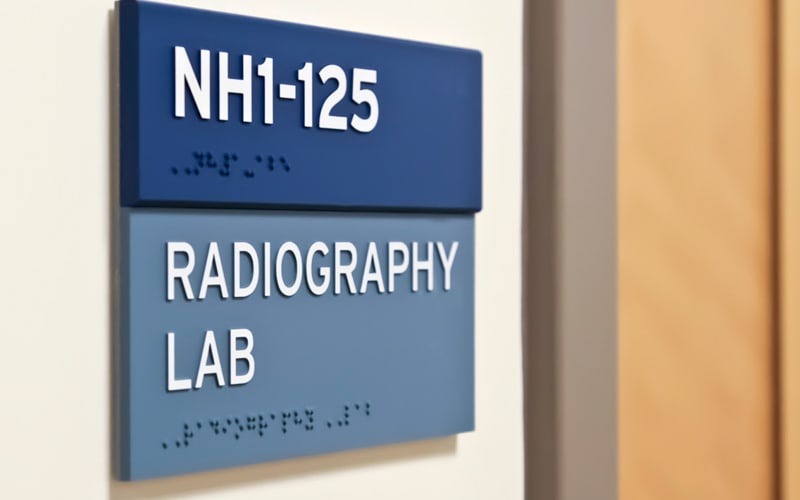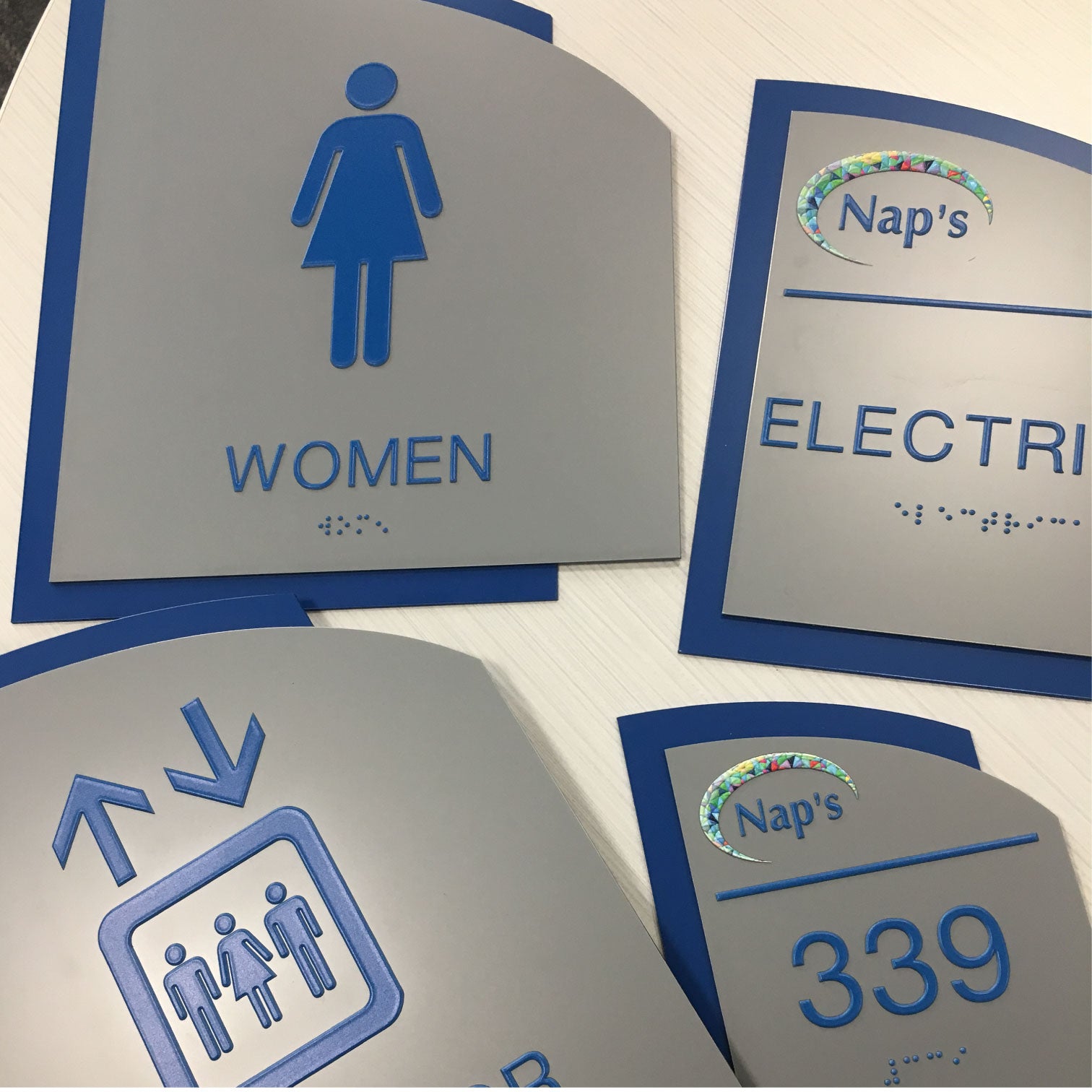How ADA Signs Enhance Ease Of Access for Everyone
Wiki Article
ADA Signage: Making Sure Accessibility and Compliance in Public Spaces
ADA signs plays an indispensable role in guaranteeing access and compliance within public spaces, substantially contributing to an inclusive environment for people with specials needs. As we check out the nuances of ADA signage, from tactile functions to make details, it's vital to consider how these aspects integrate to copyright the civil liberties of all users.Importance of ADA Signage
In modern-day society, the importance of ADA signage prolongs beyond plain compliance with lawful mandates to symbolize a commitment to inclusivity and ease of access for all individuals. These indications are necessary in developing environments where people with handicaps can browse public rooms with the exact same ease and self-reliance as those without handicaps. By supplying standard and clear details, ADA signs makes sure that every person can access facilities, solutions, and info without barriers.The relevance of ADA signage depends on its capacity to enhance the quality of life for people with impairments by advertising equivalent accessibility. It eliminates the obstacles that could otherwise impede their capability to participate totally in community life. Furthermore, these indicators function as noticeable signs of an organization's commitment to diversity and equality, mirroring broader societal values that champion the rights and dignity of all individuals.
Moreover, ADA signage plays a vital role in public safety. By leading people to leaves, washrooms, and other important centers, it ensures that all individuals, no matter of physical capacity, can leave securely throughout emergencies. In recap, ADA signs is not just a regulative demand yet an effective device for fostering a fair and comprehensive society.
Crucial Element of Compliance

Placement is important; indicators have to be set up in places that are easily visible and obtainable. Usually, signs ought to be placed between 48 and 60 inches from the ground to ensure availability for both standing and wheelchair customers. Responsive elements, such as Braille, are crucial for people with visual problems, providing crucial information in a non-visual layout.
High-contrast colors in between the message and history are needed to boost readability for people with low vision. The ADA mandates details comparison proportions to make sure clearness. Additionally, character dimension is a vital consideration, with minimum height requirements dictated by the viewing range to make sure readability from various angles.
Layout Factors To Consider for Availability
Creating easily accessible signs needs a meticulous technique to ensure it satisfies the demands of all users, specifically those with specials needs. The size of the text is similarly crucial, with ADA guidelines recommending a minimum elevation based on watching distance to guarantee clarity.Contrasting shades in between message and history are important for visibility, particularly for people with aesthetic problems. In addition, responsive components, such as Braille and elevated personalities, are crucial for individuals who are blind or have reduced vision.
In addition, the positioning of signs plays a considerable role in ease of access. Signs need to be mounted in places that are conveniently obtainable and unblocked. Guaranteeing that signage is placed at appropriate elevations and angles allows all users, consisting of those utilizing wheelchairs, to connect with them efficiently.
Typical Mistakes to Stay Clear Of

One more common error is the wrong positioning of signage. ADA standards specify exact elevation and area requirements to ensure that indications are reachable and easily noticeable by all individuals, including those using mobility devices. Overlooking these standards not only hinders ease of access but also takes the chance of non-compliance with legal criteria.
Additionally, not enough contrast between message and background is a constant oversight. Ample contrast is necessary for readability, specifically for people hop over to these guys with reduced vision. Developers often choose shades that are aesthetically appealing however do not have the essential contrast, making the message challenging to determine.
Last but not least, some developers fail to integrate responsive components, such as Braille, which are crucial more helpful hints for people that are blind. Omitting these features not only leads to non-compliance with ADA guidelines yet also limits access for a section of the populace that depends on tactile info.
Future Trends in Signage
Improvements in innovation and boosting recognition of inclusivity are forming the future fads in signs layout. As culture comes to be extra aware of varied demands, the assimilation of clever modern technologies right into signs is getting grip. Digital signage, as an example, is advancing to consist of interactive attributes and real-time updates, which can be vital in giving vibrant details in public rooms. These indications commonly integrate touch screens or gesture-based controls, enabling customers to browse content customized to their particular demands.An additional emerging fad is the use of augmented reality (AR) to boost individual experience. AR-enabled signs can overlay digital info onto the physical environment, supplying visually impaired people with auditory or haptic feedback. ADA Signs. This modern technology not only boosts ease of access yet also produces an engaging experience for all individuals
Sustainability is also a substantial element affecting signs trends. Green materials and energy-efficient illumination remedies are being prioritized to line up with worldwide environmental goals. In addition, advancements in materials scientific research are leading to the advancement of even more durable and weather-resistant indications.
Verdict
ADA signs plays a vital role see this page in ensuring availability and conformity within public areas by integrating responsive components, high-contrast shades, and critical positioning. The adherence to ADA standards not only facilitates secure navigation for people with specials needs but also represents an organization's devotion to variety and inclusivity. By preventing typical errors and accepting future patterns, public spaces can continue to advance these worths, making sure that the civil liberties and self-respect of all individuals are appreciated and supported.ADA signage plays an important function in guaranteeing access and conformity within public rooms, substantially adding to a comprehensive environment for individuals with impairments. As we explore the nuances of ADA signage, from responsive attributes to design intricacies, it's vital to think about just how these elements coalesce to maintain the legal rights of all individuals.In modern culture, the relevance of ADA signage expands beyond mere conformity with legal requireds to personify a dedication to inclusivity and access for all individuals. By providing clear and standard information, ADA signs guarantees that everybody can access facilities, solutions, and information without obstacles.
ADA signage plays an essential function in assuring availability and compliance within public areas by incorporating responsive elements, high-contrast shades, and strategic positioning. (ADA Signs)
Report this wiki page